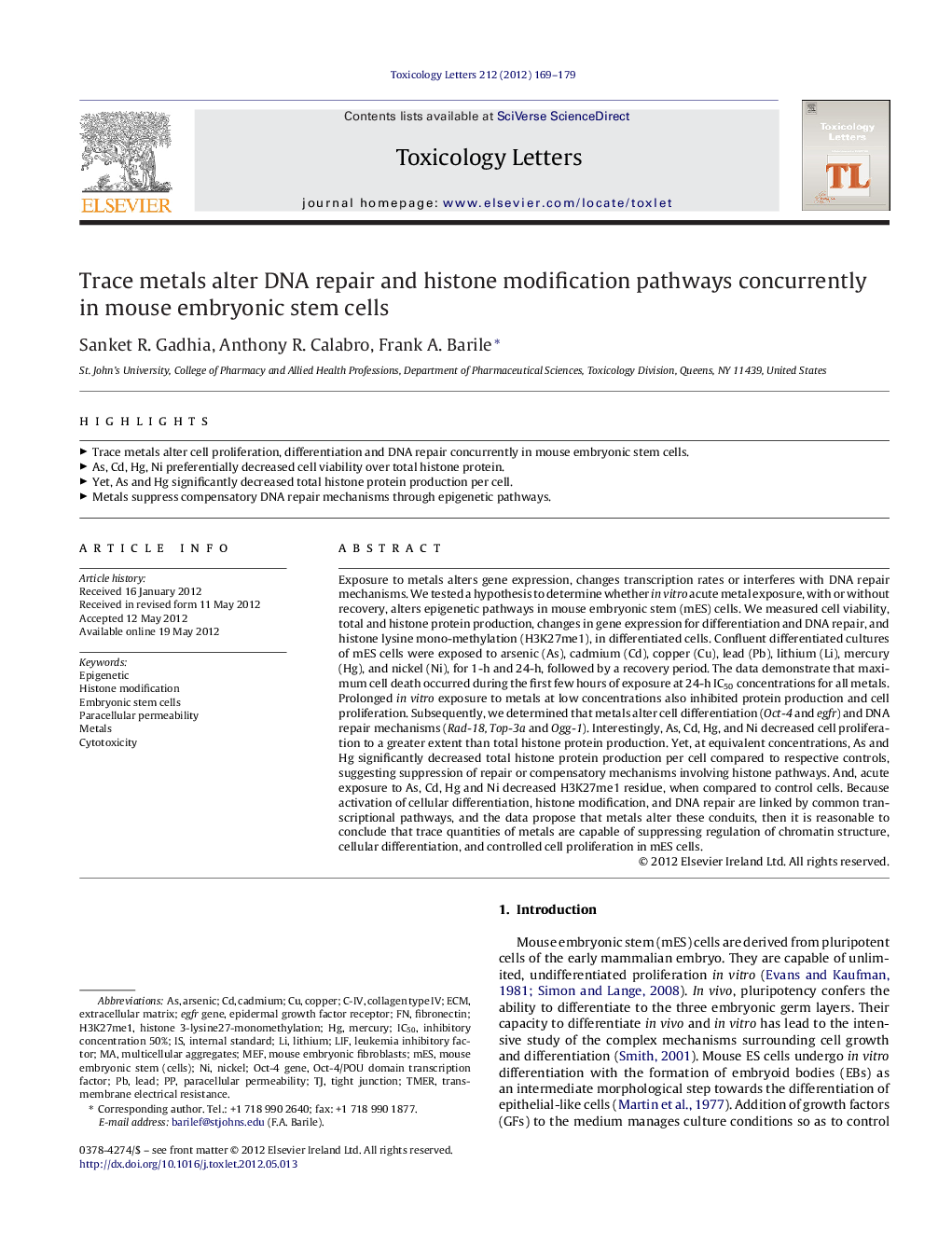| کد مقاله | کد نشریه | سال انتشار | مقاله انگلیسی | نسخه تمام متن |
|---|---|---|---|---|
| 2599566 | 1133217 | 2012 | 11 صفحه PDF | دانلود رایگان |

Exposure to metals alters gene expression, changes transcription rates or interferes with DNA repair mechanisms. We tested a hypothesis to determine whether in vitro acute metal exposure, with or without recovery, alters epigenetic pathways in mouse embryonic stem (mES) cells. We measured cell viability, total and histone protein production, changes in gene expression for differentiation and DNA repair, and histone lysine mono-methylation (H3K27me1), in differentiated cells. Confluent differentiated cultures of mES cells were exposed to arsenic (As), cadmium (Cd), copper (Cu), lead (Pb), lithium (Li), mercury (Hg), and nickel (Ni), for 1-h and 24-h, followed by a recovery period. The data demonstrate that maximum cell death occurred during the first few hours of exposure at 24-h IC50 concentrations for all metals. Prolonged in vitro exposure to metals at low concentrations also inhibited protein production and cell proliferation. Subsequently, we determined that metals alter cell differentiation (Oct-4 and egfr) and DNA repair mechanisms (Rad-18, Top-3a and Ogg-1). Interestingly, As, Cd, Hg, and Ni decreased cell proliferation to a greater extent than total histone protein production. Yet, at equivalent concentrations, As and Hg significantly decreased total histone protein production per cell compared to respective controls, suggesting suppression of repair or compensatory mechanisms involving histone pathways. And, acute exposure to As, Cd, Hg and Ni decreased H3K27me1 residue, when compared to control cells. Because activation of cellular differentiation, histone modification, and DNA repair are linked by common transcriptional pathways, and the data propose that metals alter these conduits, then it is reasonable to conclude that trace quantities of metals are capable of suppressing regulation of chromatin structure, cellular differentiation, and controlled cell proliferation in mES cells.
► Trace metals alter cell proliferation, differentiation and DNA repair concurrently in mouse embryonic stem cells.
► As, Cd, Hg, Ni preferentially decreased cell viability over total histone protein.
► Yet, As and Hg significantly decreased total histone protein production per cell.
► Metals suppress compensatory DNA repair mechanisms through epigenetic pathways.
Journal: Toxicology Letters - Volume 212, Issue 2, 20 July 2012, Pages 169–179